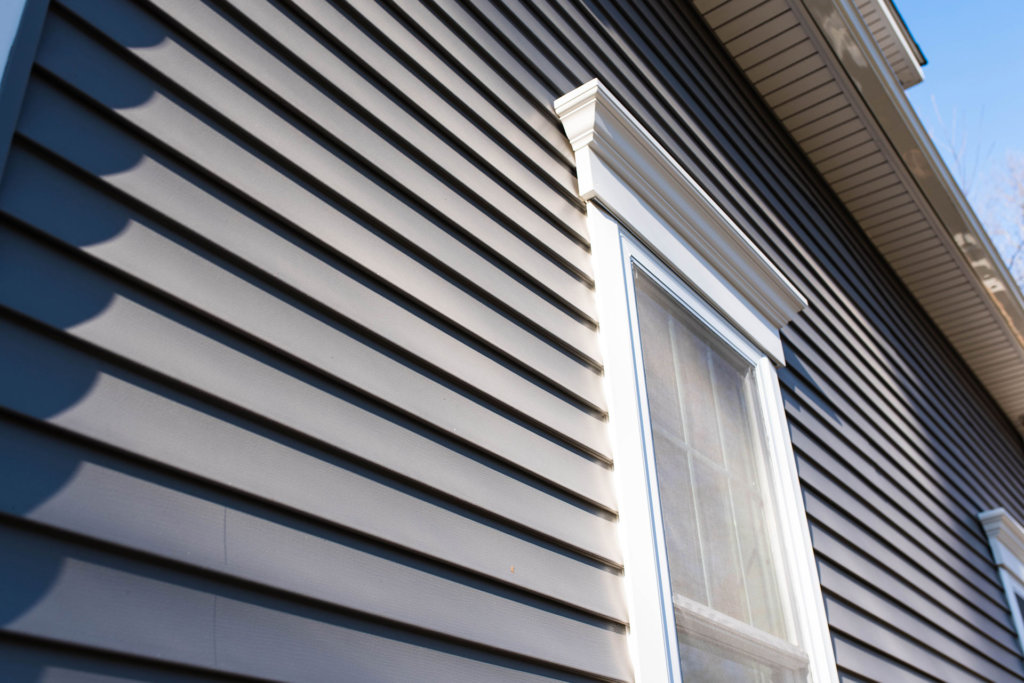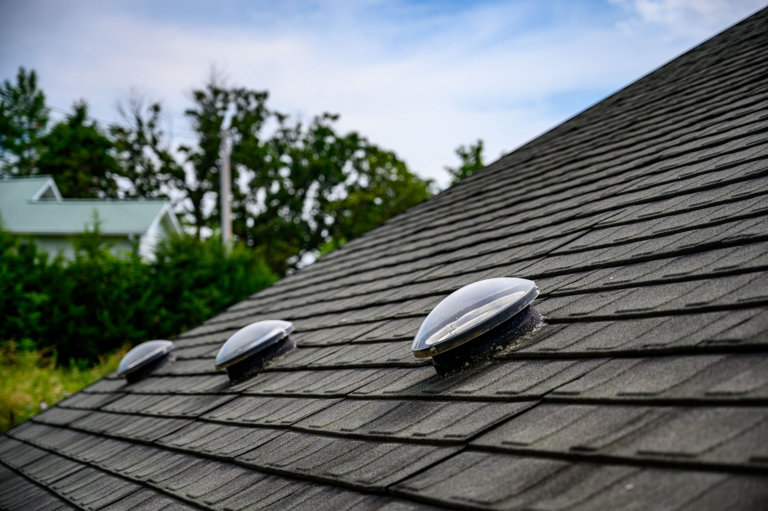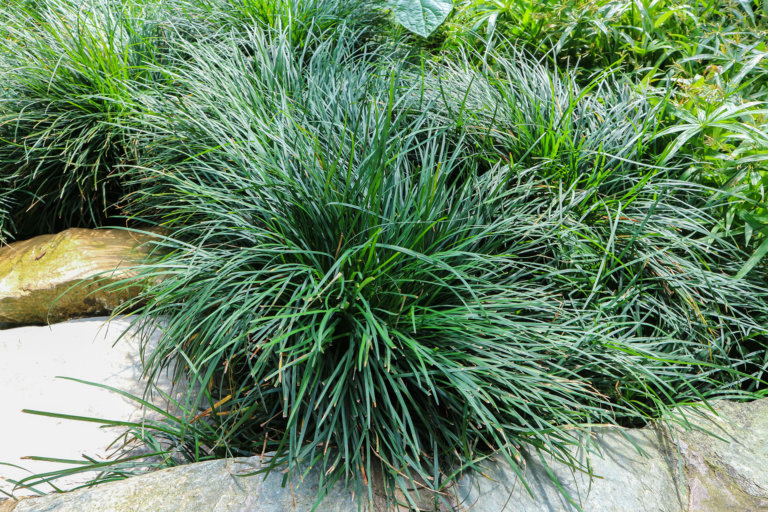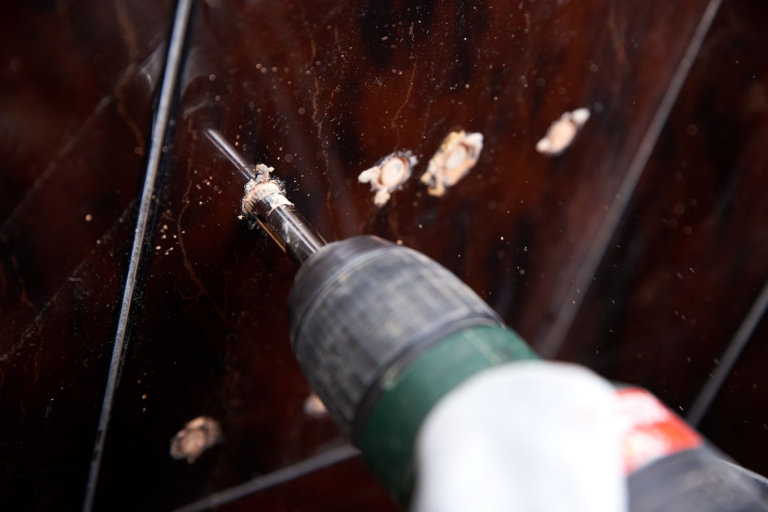Is your home’s vinyl siding looking a bit worn down, or maybe you dislike the color?
Painting vinyl siding is an affordable solution if your budget is tight.
To help you through the painting process, follow the steps in this guide on how to paint vinyl siding. A great paint job will increase your home’s curb appeal and last for years!
Before You Start
Before you go running to the home improvement store for painting supplies, take some time to consider these following issues:
The siding appearance
Even newer vinyl siding can look bad if the installation isn’t proper, and no amount of paint will improve it.
Inadequate nailing can make the siding look wavy or pull away from the underlayment.
The stress on vinyl siding is high as fluctuating temperatures expand and contract the material. With proper installation, the siding moves freely during these changes and allows it to maintain a full life expectancy.
Going with siding replacement when you see signs of lousy quality is always better than painting.
The age of your siding
If your home’s siding is twenty years or older, it’s reaching the end of its lifespan. Painting the siding now may leave you with the additional cost of a full replacement within a few years.
Inspect the material for signs of holes, cracks, or damage that indicate the vinyl is past its prime.
Unfortunately, if you ask a vinyl siding replacement company to inspect the state of your home, they may opt to embellish the actual condition to scare you and make a sale. Take any negative statements with a grain of salt or get a second opinion.
Moisture penetration
If you’re having moisture issues within your home, it could be that the vapor barrier underneath your vinyl siding has gaps or is non-existent.
The way to remedy this issue is to remove the siding to put up a new vapor barrier, at which point it makes sense to install new siding in the color of your choice.
Warranty concerns
If your home’s vinyl siding came with a warranty, be aware that painting over the material will likely make it void. Depending on the age of the siding and your budget, this may or may not be a huge concern.
You may also find that a current warranty on your home’s siding is active. If the material is failing, you could get a full replacement under its terms.
Always take a good look at any warranty you may have on your home’s siding before deciding to paint, as it could save you thousands of dollars.
Cost of replacement vs. paint
Take advantage of the free estimate any legitimate home siding company will offer to get an idea of the cost of a total replacement.
Once you have this number, you can compare it to the cost of painting. Be aware that hiring out a paint job will also need it’s own estimate, whereas a DIY paint job will entail hours of difficult work.
Include in the cost of supplies any special ladders or scaffolding you may need to rent or purchase to reach high eaves or upper levels.
The average cost of painting a 2500-square-foot home is $4,000, whereas replacing the siding averages about $12,000.
The factors that determine a final vinyl siding cost, such as siding quality, installation difficulty, and accessories such as nails and trim work, can alter this price dramatically. An in-person quote will be much more concise.
Color
If you have your heart set on a color for your home that isn’t available in a vinyl siding, painting may be your only option.
The color options and textures of vinyl siding are much greater than they were a decade ago. However, the palette range is still fairly slim across all manufacturers.
So as long as your siding is in good condition, painting is a viable option that can transform the look of your home.
Effect on home value
Making your home look fresh with new paint can increase the value.
Conversely, if you paint over siding that is old and cracking, it may do nothing to help value. Potential buyers or home appraisers will still see that the siding needs replacement. In contrast, new siding will attract buyers and can bring up to an 80-percent return on investment.
Time of year
Lastly, consider the time of year you plan to paint. Obviously, trying to paint during the winter or rainy season may be nearly impossible.
Attempting to paint in the heat of summer or on windy days may also cause undue stress and poor paint adherence.
Late spring and early fall are best to paint vinyl siding as the weather is more moderate. With better painting conditions, the process will be more successful overall.
Expect it to take a week to paint an average size home, including trim, fascias, and soffits when conditions are ideal.
Supplies to Paint Vinyl Siding
Preparation is key when painting vinyl siding. Here’s a list of supplies you’ll need:
- Degreasing cleaner
- Bonding primer
- High-quality exterior acrylic paint made for vinyl
- Paint sprayer or brushes and rollers
- Tape, rags, drop cloths, and bucket
- Ladders or scaffolding
The most critical supply you will need is the right type of exterior paint. Acrylic paint provides the best bond to vinyl, while a urethane-acrylic formula is another top choice.
Avoid latex or oil-base paints, as these will perform poorly and ruin all your hard work.
A paint sprayer will deliver the smoothest and fastest finish, as it covers under the siding laps evenly.
Step 1: Clean
Wash the surface of your siding using a degreasing cleaner. Rinse siding well with clean water and allow it to dry thoroughly.
TIP: You may think using a power-washer without the cleaner is okay, but grime from traffic dust can leave a layer that will interfere with the paint bonding to the vinyl.
Step 2: Prep
Tape off and protect areas you don’t want the paint to attach, especially if you are using a paint sprayer for application.
Windows, doors, brick, lights, sidewalks, and bushes are common areas to cover.
Spread out your trays, rollers, and brushes or paint sprayer and set up ladders and scaffolding securely.
Step 3: Prime
Apply one even coat of an exterior bonding primer made for use with vinyl.
Some siding that has weathered at least one year but is not older than ten years may be fine with only a good cleaning. However, experts recommend you opt for the primer when time and budget allow.
Step 4: Paint
Apply your first topcoat as evenly as possible. Watch for drips, but also keep an eye out for flying insects or leaves that may stick into the paint before it dries.
Don’t ignore any debris stuck in the paint, as this is where the paint will bubble up and flake off in short order.
Once the first coat is thoroughly dried (allow a minimum of four hours), apply a second and final coat of paint.







